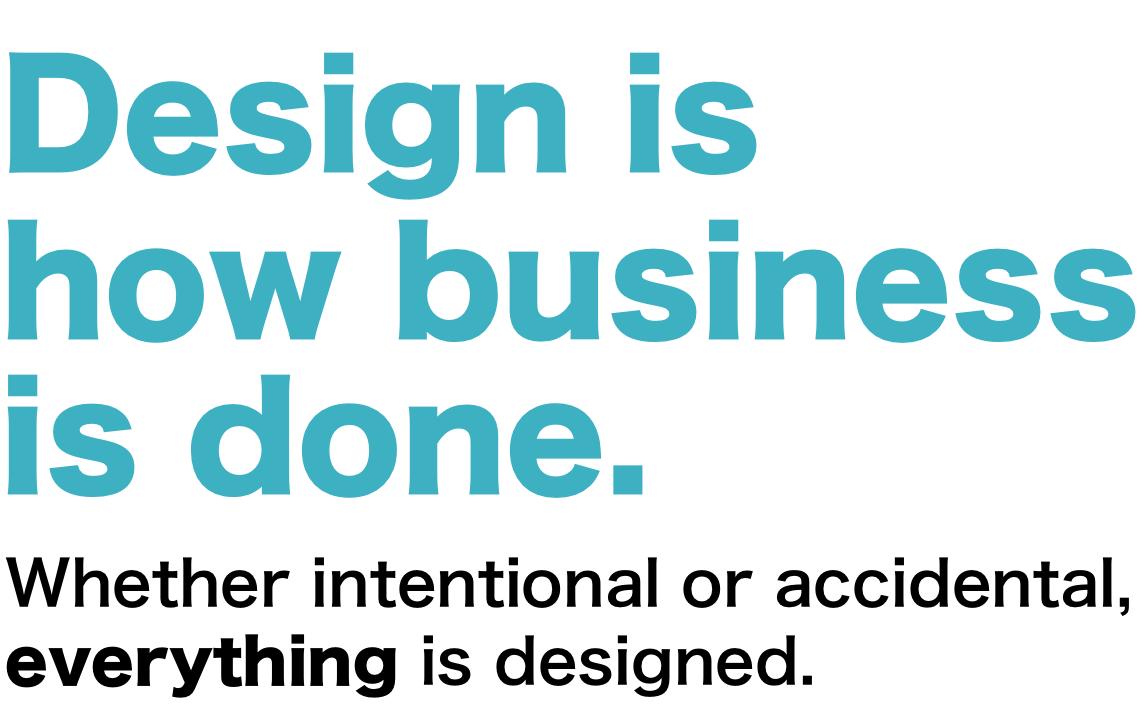Sales. Orders. Average Order Value. Churn.
What do all of these things have in common? They are all examples of metrics that companies obsessively measure.
What’s a critical metric that more than half of companies aren’t tracking? Design.

Design can be measured.
In fact, design must be measured because design has a direct impact on the bottom line.
Design is more than just colorful pixels or breathtaking photography. Design is how business is done. Whether intentional or accidental, everything is designed.
- What business policies, protocols, or systems create customer problems today?
- How quickly do you triage or resolve customer problems?
- What type of people do you hire and values do you prioritize? What training do employees receive to ensure they talk to and treat customers in the desired manner?
Designed. Designed. Designed. It’s all designed.
Measuring design (and then activating on the insights) ensures your company’s products or services incrementally improve—further driving higher ROI.
Measure Design by Measuring Customer Effort
Below, I share a list of ways to measure design, but first I want to talk about the No. 1 design metric companies should activate: CES.
CES (customer effort score) measures how well the design reduces or eliminates customer problems.
In their extensive research, Gartner discovered that CES more accurately predicts customer loyalty than NPS (net promoter score) and CSAT (customer satisfaction). It turns out frustrations outweigh (and may even erase) delights.
When Design Decisions Create Customer Problems
Unfortunately, not all design solutions serve customers’ needs. Using design to solve business problems rather than customer problems can backfire.
Here’s an example:
Over Christmas break, my family stayed at a waterpark resort. My expectations were high—we had stayed at this same resort last year and had a phenomenal experience.
But this time was noticeability different. From start to finish, I was either frustrated or disappointed in our experience.
Here’s one example:
My husband pre-checked in from home by paying the balance on our room. When our room was ready—about 3 hours before the “official” check-in, he received a text message.
Upon arriving at the resort front entrance, I jumped out of the car to make my way to the “pre-check” line and grab our hotel key.
Instead of the short-cut line I expected like at Target or the airport, there was a mob of people in the lobby and one long, winding line to check-in. I texted a photo of the line to my husband to let him know that he should park the car.
Next, getting into our room was also a bad experience. The front desk clerk had written the wrong room number on our itinerary so we spent several frustrating minutes trying to get into our room.
Luckily, a housekeeper was working across the hall and unlocked our door. Inside, it was immediately clear “our” room was, in fact, not ready.
Without this housekeeper, we would’ve likely headed back to the front desk to get new room keys to try again—not knowing the room number was the actual problem.
What a way to start our vacation. And now here I am, telling you.
This series of unfortunate events got me thinking… what was even the point of their “pre-check” option? The resort obviously gets financial value (a room paid in full), but they didn’t design any value for me, the customer. I still had to hand over my credit card at the front desk—so literally no time was saved.
As for the wrong room number, is there a simple solution to prevent human errors, such as transposed numbers or illegible handwriting?
Let’s try this again:
After observing the constant mobs of people in the lobby, it’s clear the check-in process is a customer problem and business problem. While interviewing several parents, several express high levels of stress managing / entertaining their children while waiting to check-in.
What if families could bypass the front desk altogether? That is, allow customers to check-in, choose their room and any upgrades, and unlock their hotel door from their smartphone?
Rather than processing transactions, hotel staff are now freed up to create experiences. CES goes down, NPS goes up, profits increase due to incremental revenue from self-serve upgrades, and customer loyalty improves.
14 More Ways to Measure Design
In addition to CES, here other design metrics to consider:
- CSAT – Customer Satisfaction
- SEQ – Ease of Use
- SUPR-Q – Overall User Experience
- SUS – Overall Usability
- Task Completion Rate
- Time on Task
- True Intent – Ability to Complete Tasks
- Traditional Web Metrics (e.g., CTR, conversion rate)
You could also consider measuring the cost of design operations (AKA design ops), such as time and expense wasted on abandoned products or reworking products—due to badly defined requirements.
You may even be able to tie design efforts directly to business metrics, such as lower customer churn rates or fewer returns.
In addition to tracking design metrics, conduct UX research to ensure design decisions meet customers’ needs:
Top Task Analysis
What are customers most frequent tasks or use cases for your product or website? Is your product or website aligned?
Usability Study
Are customers able to successfully complete their top tasks? For transactional tasks that should be as quick and painless as possible, how long does it take customers to complete them?
Tree Test
Are customers able to successfully find information or products within your system or website navigation?
Emotion Scale
How do customers feel while completing a specific task? Ask customers to indicate how positively or negatively they feel without having to commit to specific emotion labels.